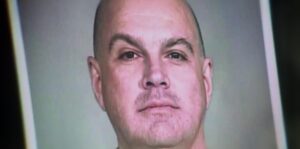Series Review: “Stolen Youth” Captivates but Fails Its Duty of Care
Written by: Heidi Shepler | February 8th, 2023

Stolen Youth: Inside the Cult at Sarah Lawrence (Zach Heinzerling, 2023) 1 out of 4 stars.
Stolen Youth: Inside the Cult at Sarah Lawrence covers the crimes of Lawrence Grecco—more commonly known as Larry Ray—perpetrated against a group of college students whom he trapped in a cult. So much about the docuseries is extremely well executed: the interviews with the victims are extensive and clearly every effort has been made to tell the story through their eyes. There is a delicacy and compassion in the way the victims and their families are presented that is often absent in true-crime documentaries. Unfortunately, this compassion only goes so far. In the pursuit of salacious entertainment, Stolen Youth undermines its own attempts to allow Larry Ray’s victims to reclaim their own dignity and autonomy.
Morbid curiosity in itself is, of course, not a bad thing. Most people are going to want to know the following: how is it possible for one man to ensnare a group of students who are attending an elite school, and who are known for their intelligence, and who have support systems through their college, friends, and family? The first episode of the docuseries (out of three total) tells us that it’s simple: under the guise of visiting his daughter at her college dorm, he identified who among her friends was most vulnerable. He then insinuated himself into their lives, using language much like a therapist to get them to open up and tell him everything about themselves. Unlike a therapist, he positioned himself as the person who loved and cared for them most, the person who could see their value in a way that their friends and families never could. He became the person with the “answers” to all of their lives’ struggles. He isolated them from their support systems and began to psychologically, physically, and in some cases sexually, abuse them.

Like some other cult leaders, Larry Ray’s obsessive paranoia led him to record everything. He recorded phone conversations, and kept either audio or video recordings of everything else. His reasoning is largely irrelevant. Maybe his delusions of grandeur made him believe that recording himself committing crimes would never have consequences, or maybe he truly believed his actions were justified. He used many of the tactics that were common during the Bush administration’s “enhanced interrogations”: sleep deprivation, starvation, drug abuse. And because his victims lived with him for a period of up to ten years, the long-term effects of his treatment toward them were profound. The result is that there are probably thousands of hours of audio and video of him torturing multiple people. The downfall of Stolen Youth is that the docuseries features that audio and video footage.
It’s difficult to articulate just how harrowing it is to watch video footage of a person—not even an actor portraying torture in a safe environment but a real person—being tortured on screen, knowing that the victim has suffered terrible hardship and trauma from that torture. This violation of privacy and dignity contrasts harshly with the way the series otherwise treats the victims. There are never any insensitive questions about why they didn’t “just leave” or “just know” that they were in a cult; in fact there don’t appear to be any insensitive questions at all. Which suggests that the producers knew how dangerous cults can be, and how fortunate it is that no one died because of Larry Ray. Unfortunately, that makes the inclusion of the torture footage even worse, because they knew just how awful it was, and included it anyway. Why? For the views, undoubtedly. The inner workings and justifications of Larry Ray’s mind remain a mystery, but we do know that he used his control over his victims to exploit them for money. It’s hard not to conclude that the docuseries essentially re-victimized them by forcing them to relive their trauma for the same reason.

The bright note at the end of the series is that three of the people who suffered most because of Ray’s cult—siblings Santos, Yalitza, and Felicia—have reunited. Ray played them off of each other, isolating each member of the formerly close-knit family. But now that Larry Ray is in jail and can no longer hurt them, they’re together again. In the last episode, they make lunch together, talking and laughing like a normal family. They talk hopefully about the ways they’ve already rebuilt their lives, and the ways they hope to continue doing so in the future. Their resilience and capacity for forgiveness is incredible.

